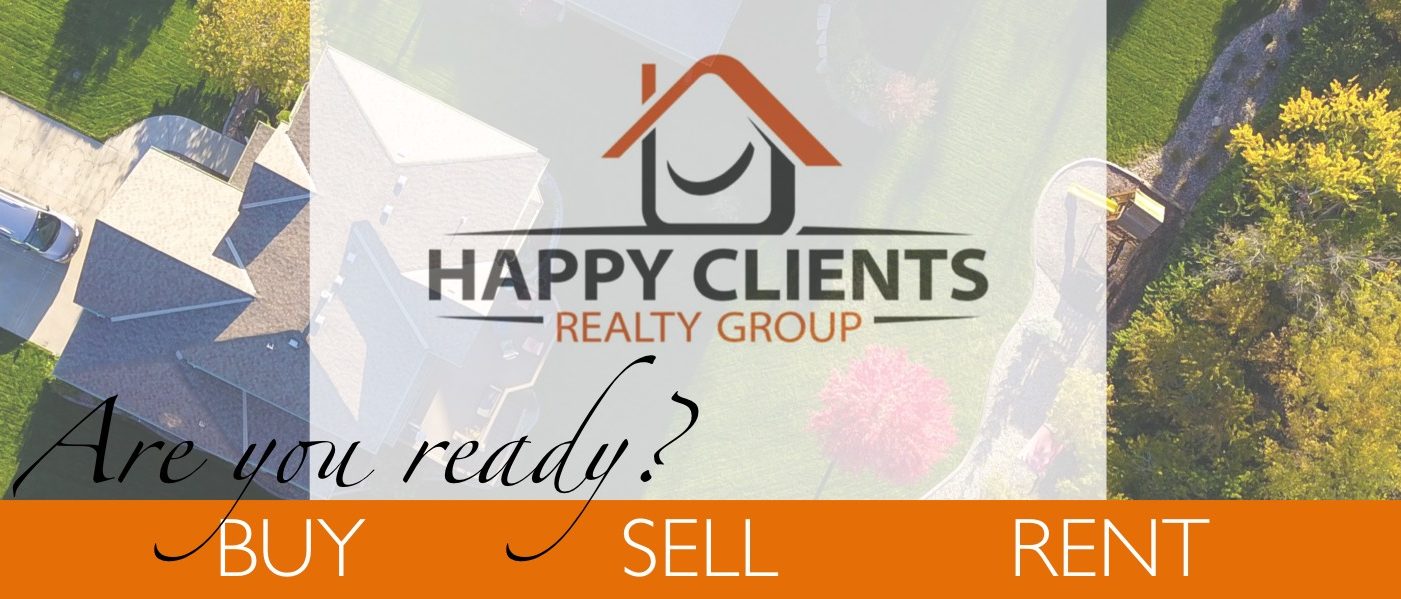Take the time to review your lease before you sign it. Here are a few things to review:

- Landlord – This should match the owner records with the county.
- Tenants – Make sure that everyone that is 18+ years old is listed.

Verify the property address and the non-realty items that will be included. Typically these are washer, dryer, and refrigerator (if applicable).

Verify the term of the lease. Normally these are 1 year terms. Longer terms are not always great. You might not like the landlord. Signing two years will commit you to a landlord that is non-responsive.
Read the delay of occupancy paragraph. Will this effect you?

What type of notice do you need to provide? 30 days, 60 days, 90 days? How do you provide notice? Will this work for you?

Review the proration options selected. Are these acceptable?
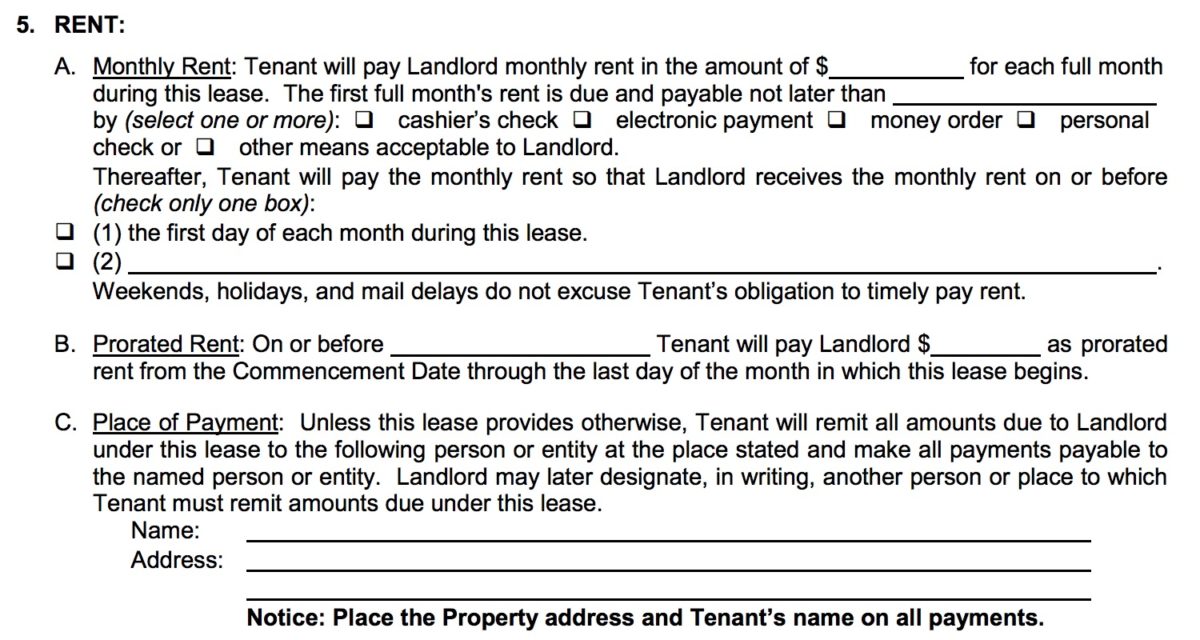
Verify the rent amount and when the first month’s rent is due. What types of payments are accepted?
When is your rent due? Section A, 1 or 2
Are you starting your lease mid-month? If so your rent may be prorated. If so, check the amounts.
Place of payment: where do you send your payment? Does the name match the property owner?
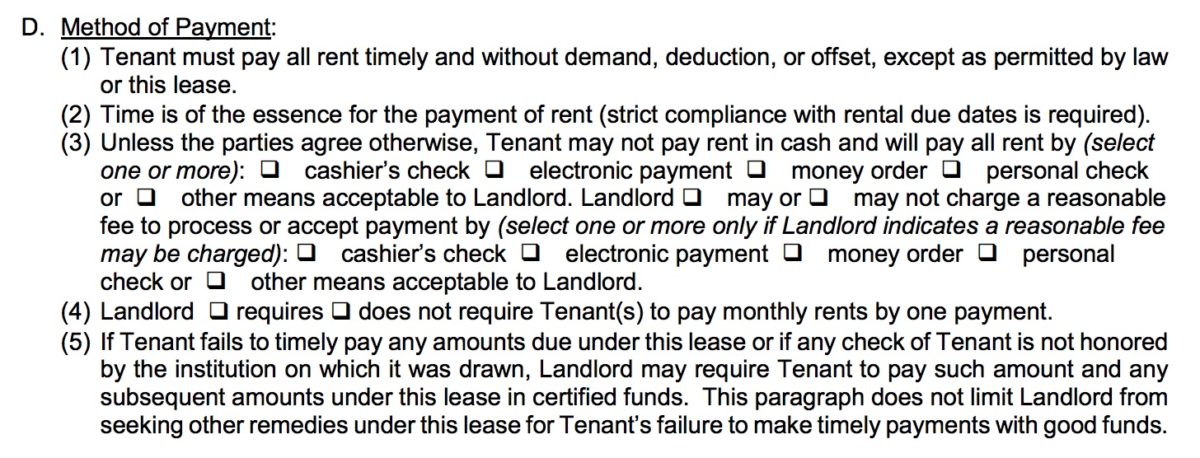
Please note: there is no reason why you would withhold your rent payment. This includes lack of repairs.
Do you want to send your payment electronically? Do they accept other forms of payments? Do they accept personal checks?
Usually the landlord will want to receive their rent all in one payment and not in multiple smaller payments. If this is something you want, get it in writing before you sign the lease.

The rent should remain the same during the agreed upon term. Once you enter a month to month agreement, the rent may increase.
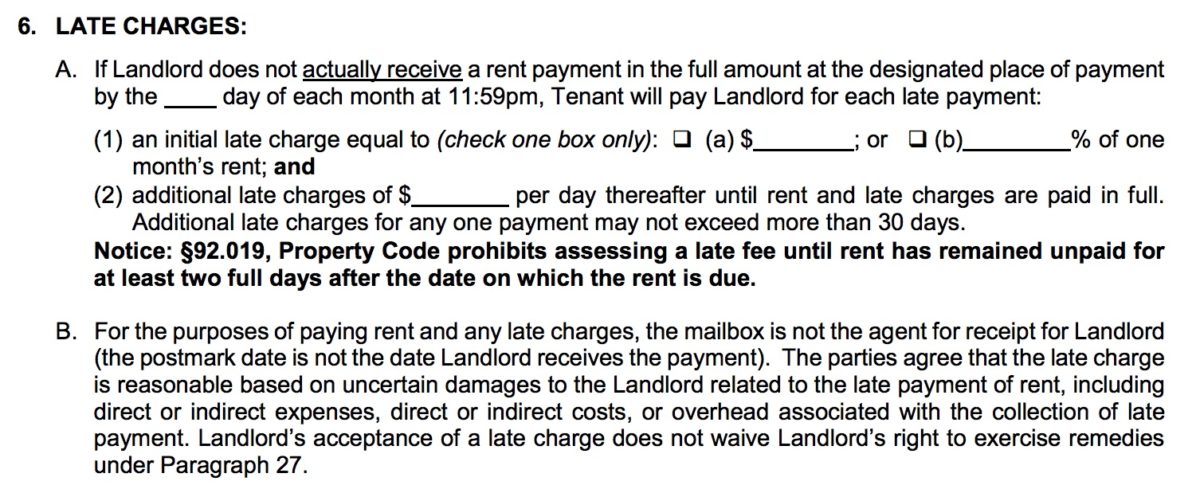
Review the late fee policy. Late fee laws

Review the return payment policy.

This is an important clause. Make sure you are in agreement. This is typically non-negotiable.
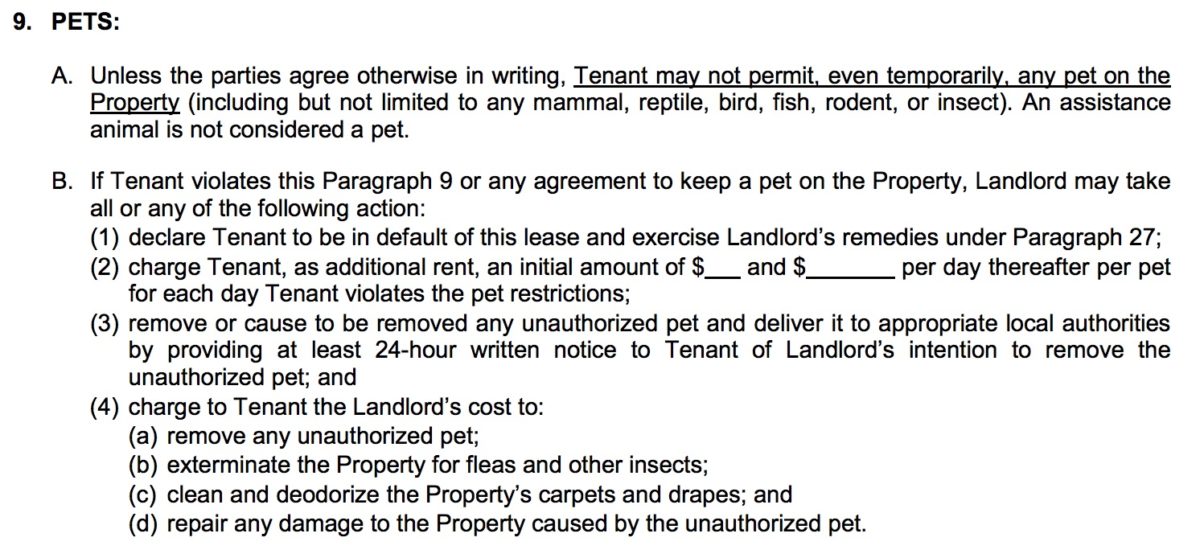

This paragraph is very important if you have a pet or plan to get a pet. This is a term of a lease that is breach very frequently and can lead to eviction.
There is an additional addendum for the pet details. This only covers violation of the pet policy.
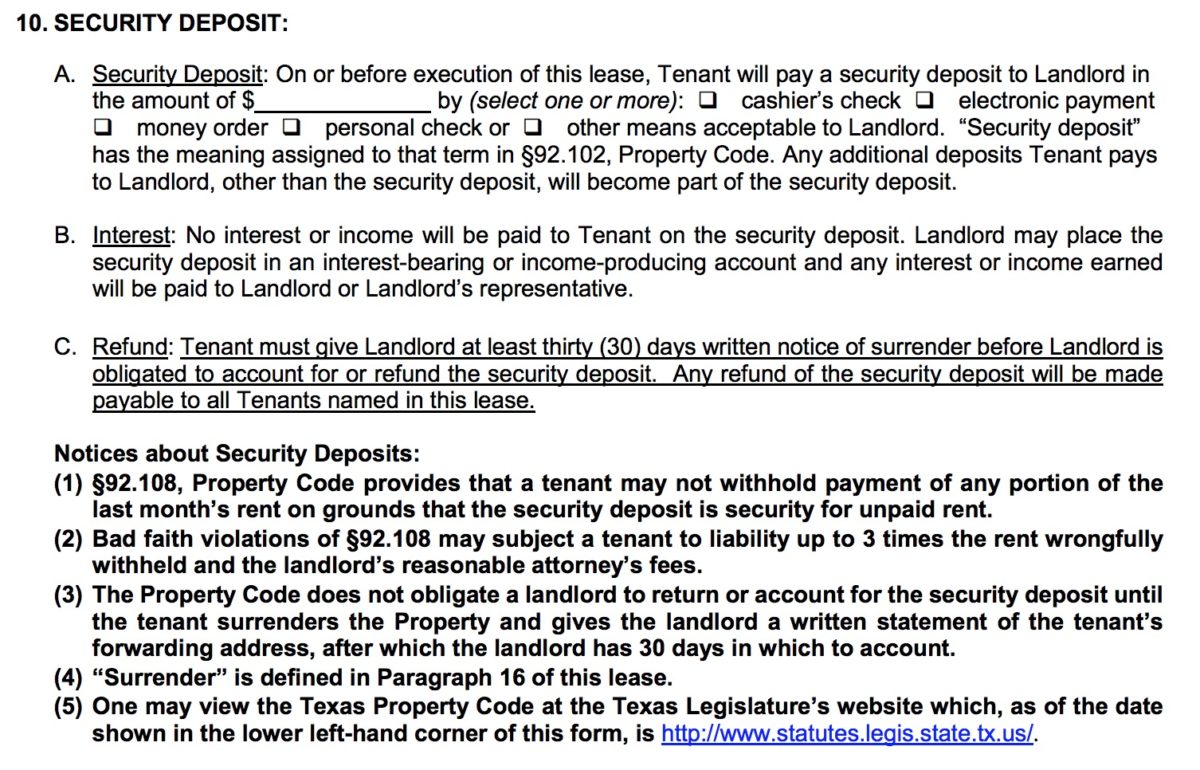
Verify the amount of the security deposit.
Review the terms of the security deposit refund policy. The landlord normally has 30 days after move out to refund the deposit minus damages. Before you move out make sure to provide a forwarding address.
Your security deposit is not your last rental payment. Do not withhold your last payment.
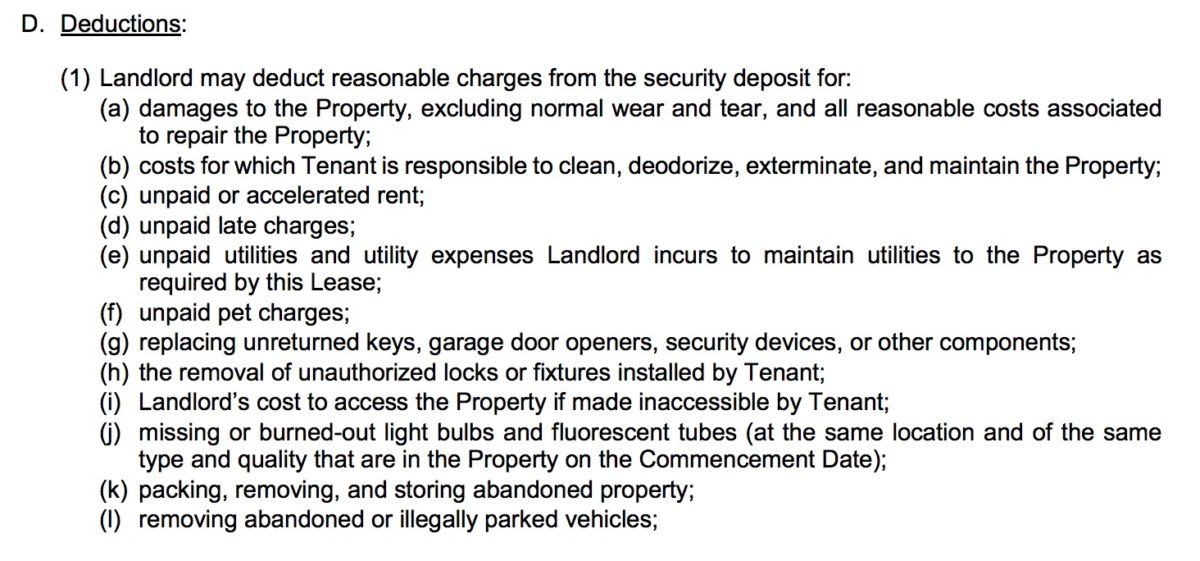
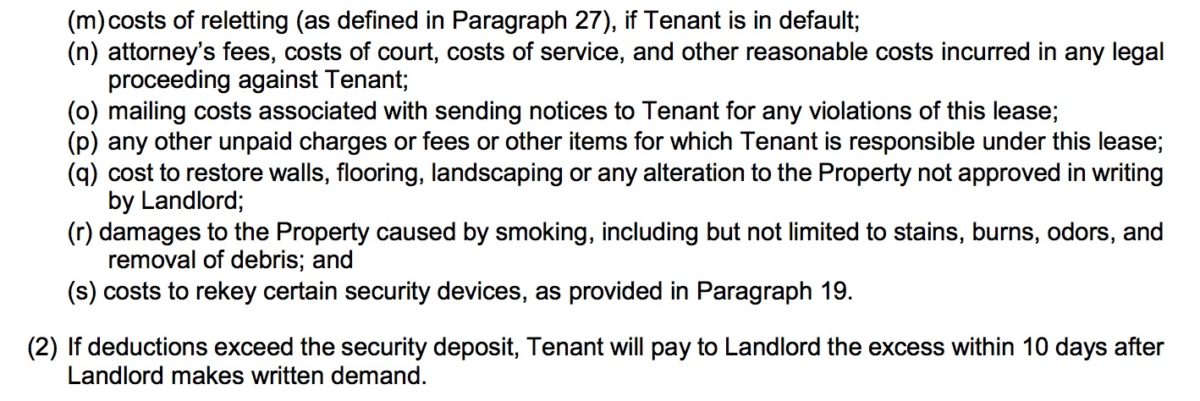
What can the landlord deduct from your security deposit? Review #2

Verify the utilities that you will be responsible for. Do they match what was discussed verbally? Note that you have to maintain utilities during the term of your lease.
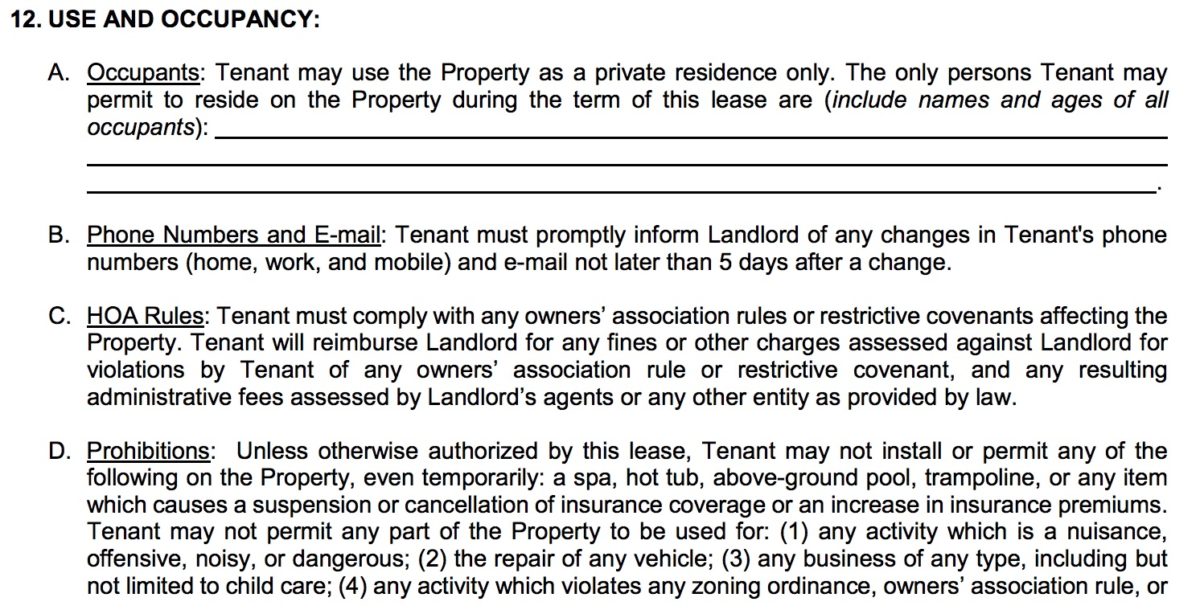

Occupants – This is a very important section. Please make sure that ALL occupants are listed. If the landlord finds out that others (not listed) are living in the home, they can start the eviction process due to breach of lease.
HOA rules – Make sure that you are ok with the HOA rules. Do you want to have chickens in the backyard? Are they allowed? Are you running a business from your home? Is this allowed? Read the prohibitions
Guests – Will you have guest often? Will they stay for more time then allowed? Negotiate this before you sign.
Common areas – The landlord does not have to pay for you to gain access. You might as a tenant be able to pay for access. Check with the HOA before signing.

Parking restrictions – How many vehicles will you be allowed to park on premise? Is this acceptable? Many neighborhood will not allow commercial vehicles. Check into this before you sign. This is a very important paragraph. Read it thoroughly.
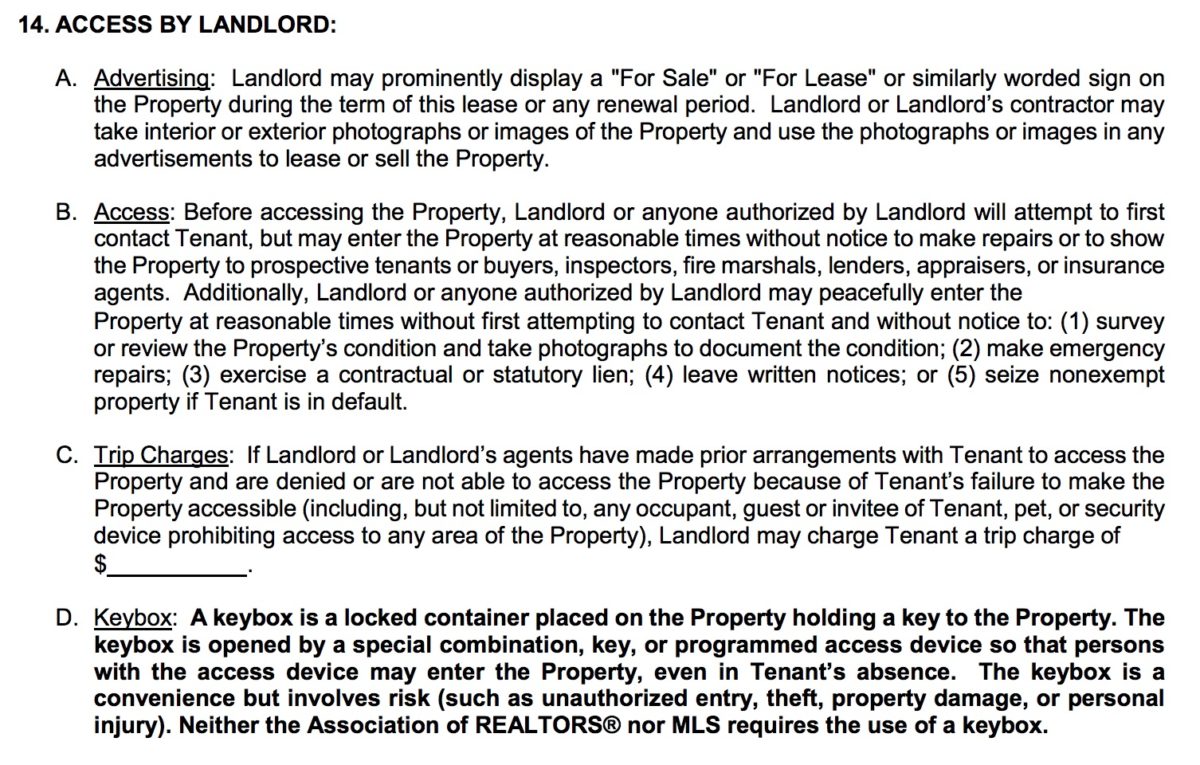
Very important section! The landlord will not want the home vacant for a long period of time. They will want to begin marketing the home as soon as you give notice.
Keybox – The landlord can install a lockbox so that Real Estate agent can show the home during the marketing period. The tenant has to consent but if you don’t consent, there are penalties (see next section).
Access – review the access paragraph. This is normally non negotiable. It’s important you are ok with this. Review the trip fee section.
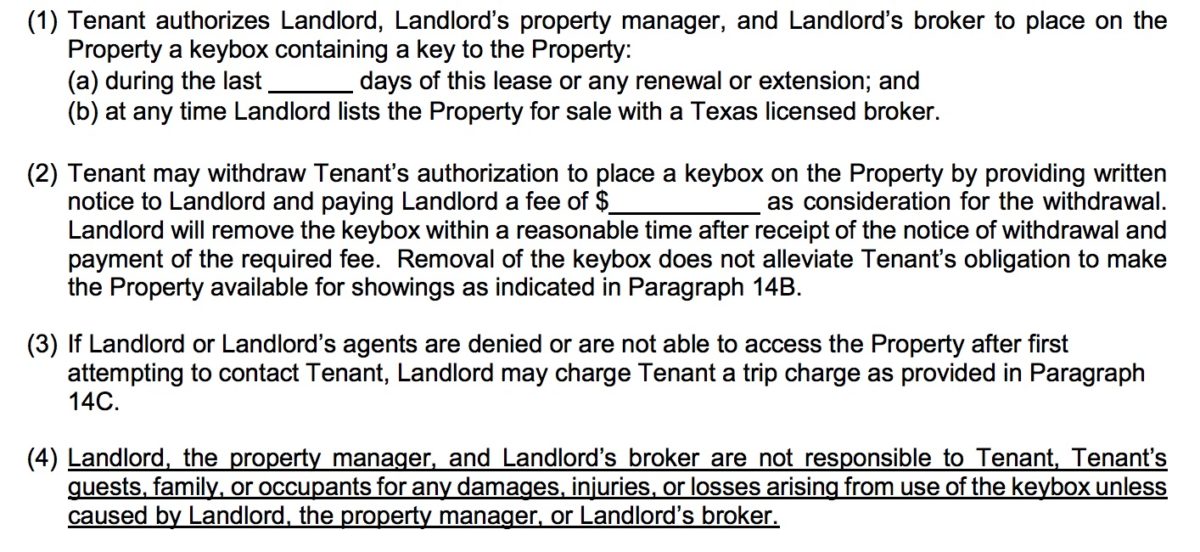
#1 These are the number of days in which a key box can be installed
#2 this paragraph will list the penalty you will pay if you refuse that the key box is installed.
#4 read number 4. When the property is being showed there is alway a possibility of losses and damages.

Section A, should list any repairs you’d like completed before you move in. Normally the homes are rented as-is.
This section will list the number of days in which you must complete and turn in the inventory and condition form.
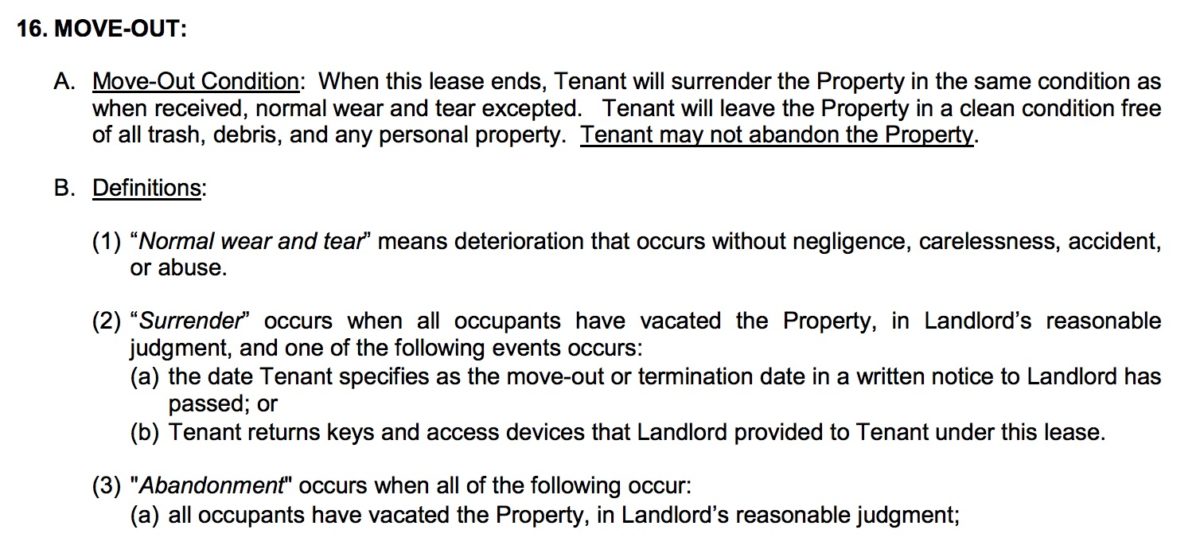
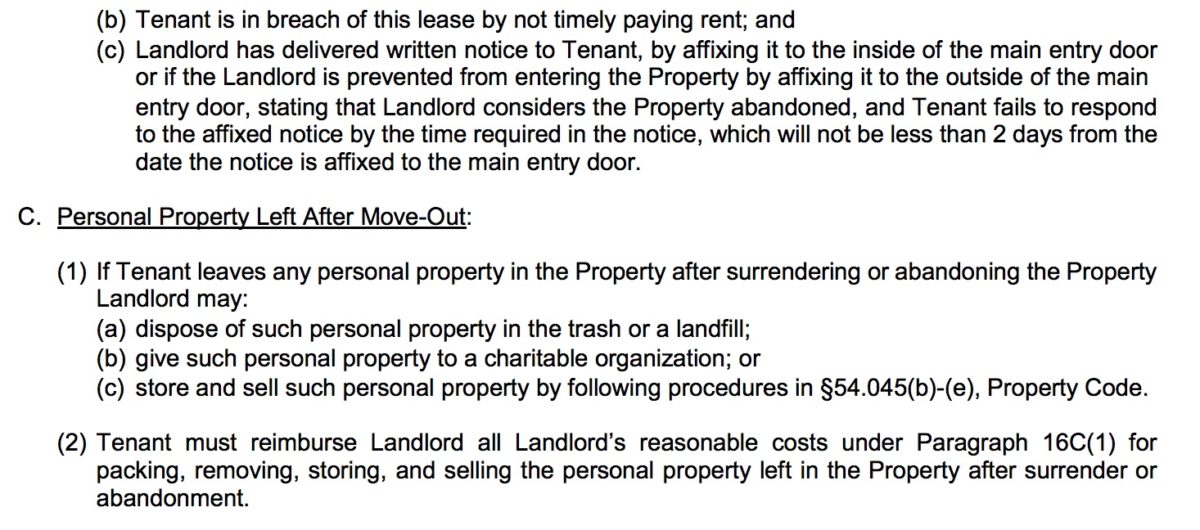
Read this section carefully. This can cost you money if not done properly.
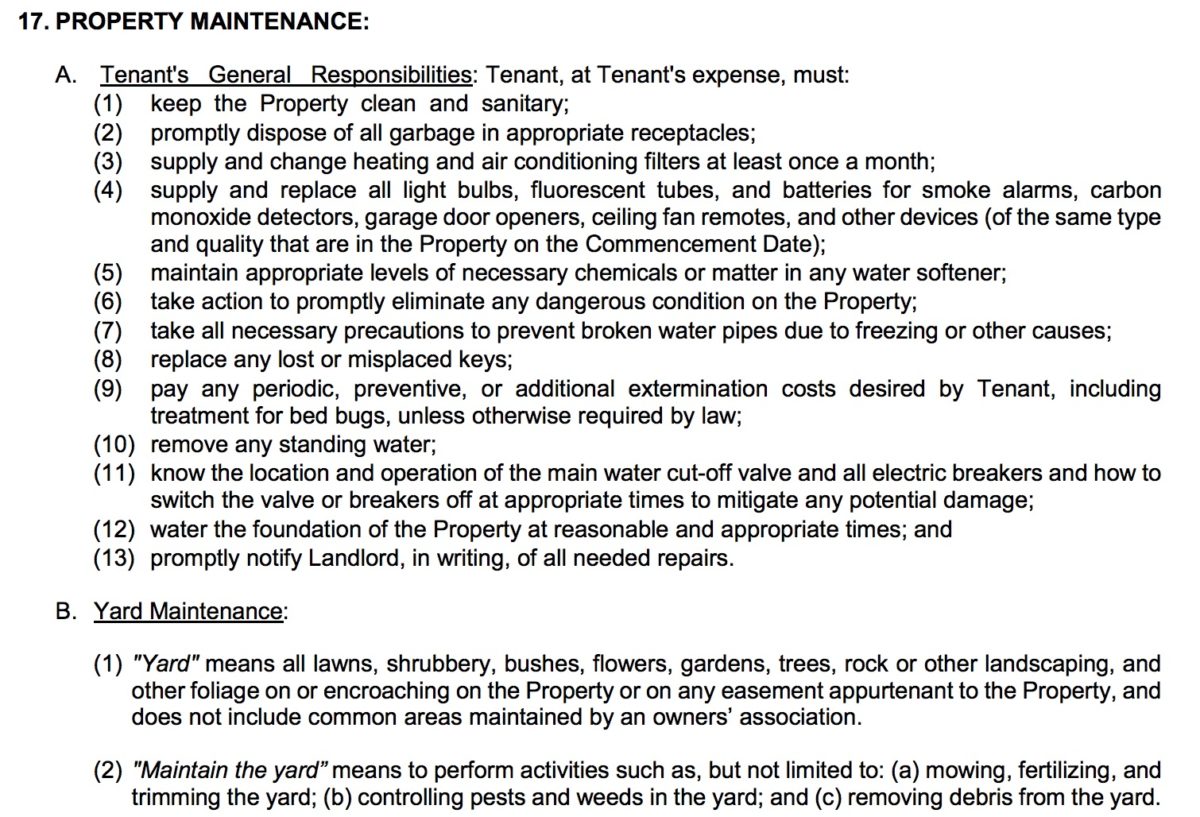


This paragraph will list what you are responsible for as a tenant. If not completed, it can cost you money.
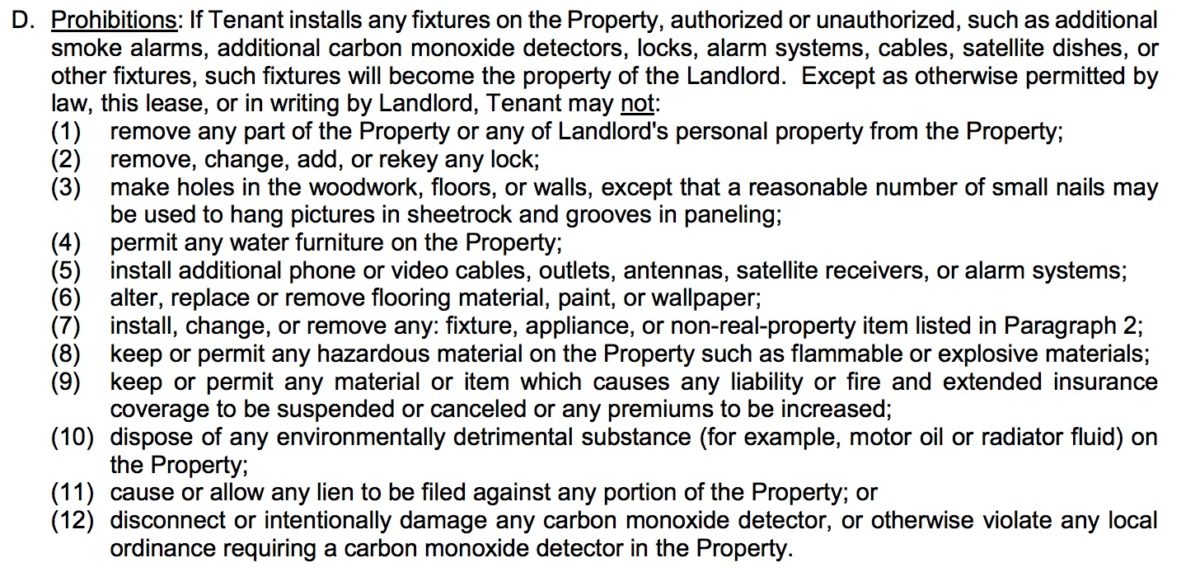
Review all prohibitions. These are usually non-negotiable.

What happens if you fail to maintain your responsibilities?

This is a very important paragraph. If you are a smoker and plan to smoke in the property (in the garage or outdoor areas around the home) make sure that this is permitted. The cost of cleaning the home of the smell of smoke is very costly.
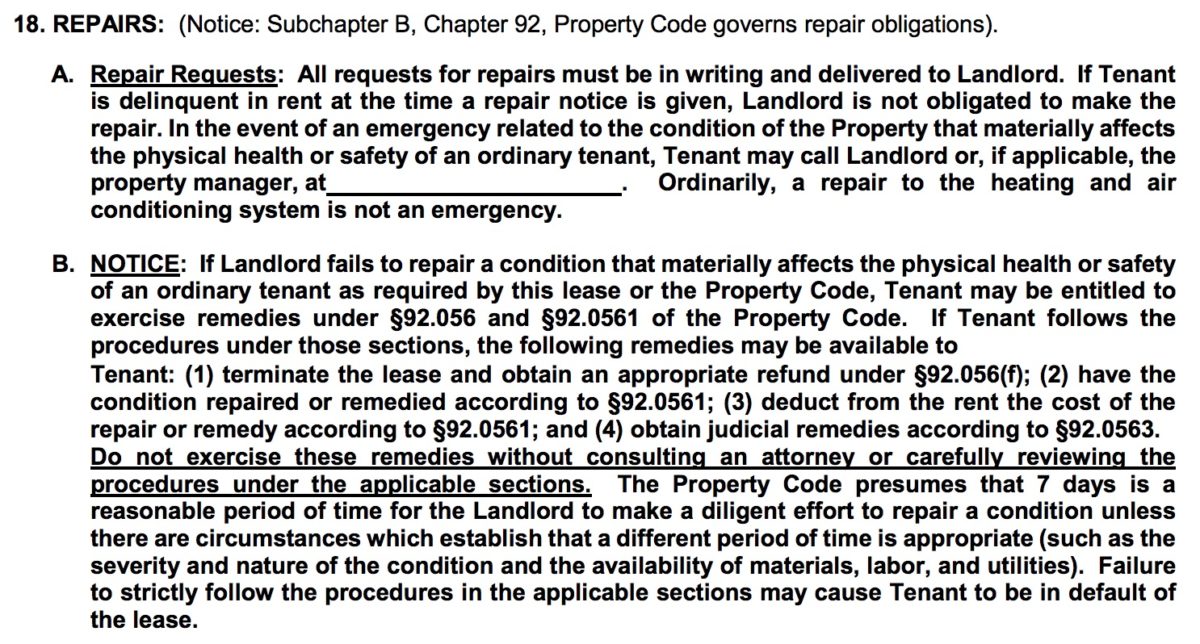
Repair request – How do you call if there is a repair that needs to be completed? This paragraph will also define what is considered and emergency.
Review the notice paragraph. This will explain your remedies if repairs aren’t completed. You should always consult with an attorney if this should arise.

Further details on who and when are repairs are completed.
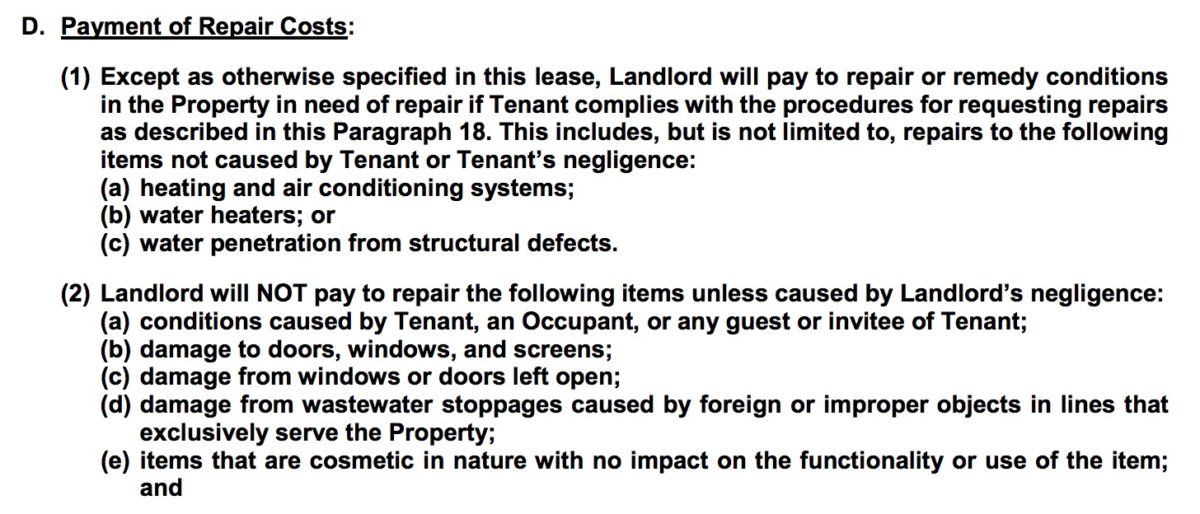

What repairs are the landlord responsible for? What is the tenant has caused the damage? See section F, the tenant may be expected to pay the cost of repairs in advance if it’s caused by the tenant.
Section D, f – These are items that will not be repaired by the landlord.
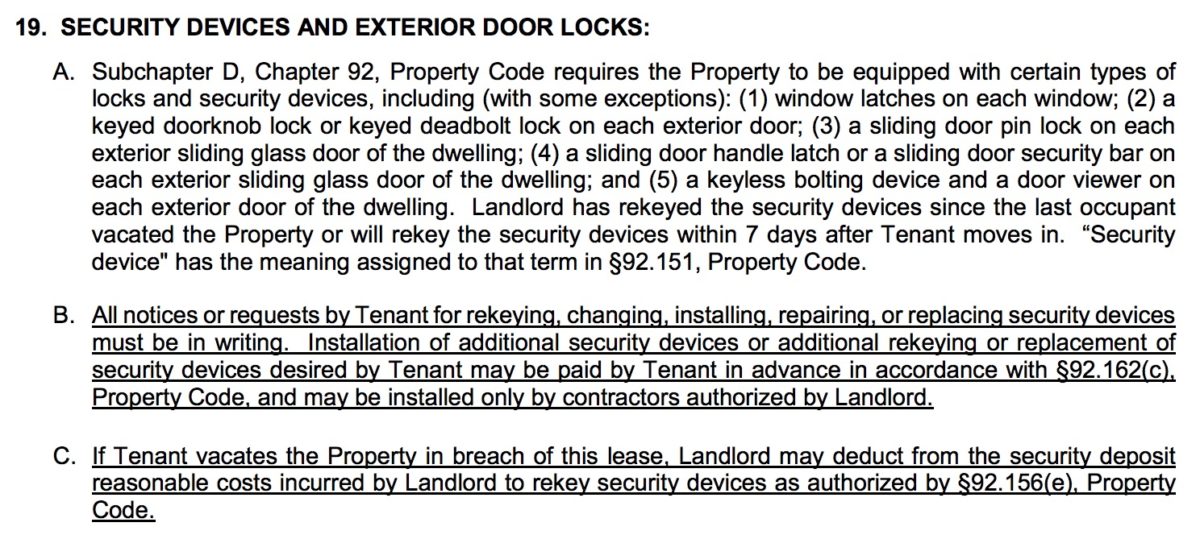
Review security devices, locks, and rekey service allowed. What is expected from the landlord? How to request services?

Smoke alarm rules. Read thoroughly.

Read thoroughly

What happens of you the tenant refuses to leave on the schedule date?

This is usually left blank. If there are terms listed in this section make sure you agree.
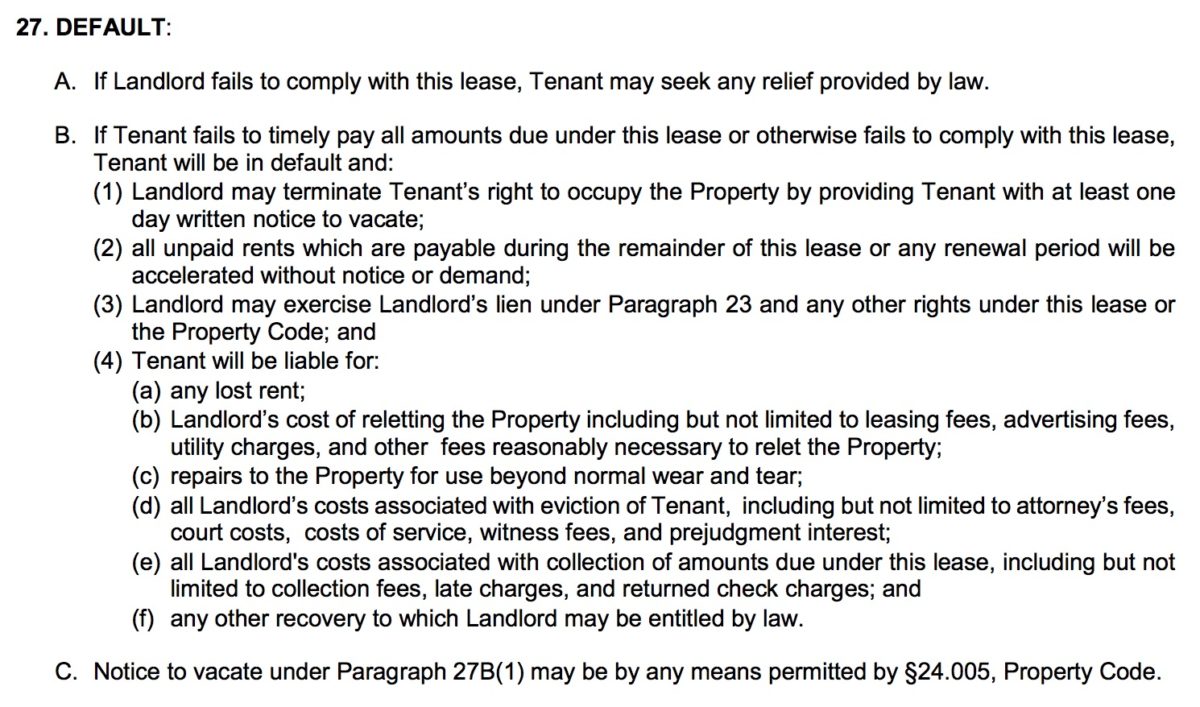

Review the default paragraph. What happens if the landlord or tenant defaults?
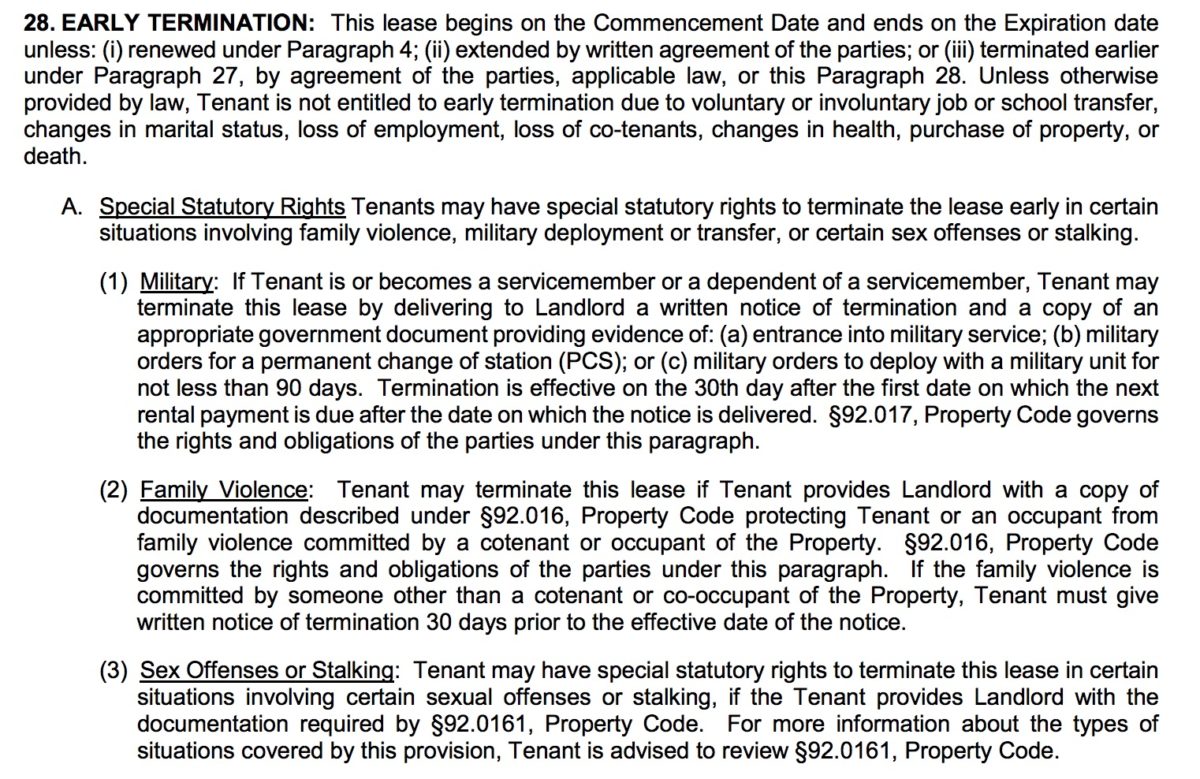
There aren’t a lot of reason in which early termination is allowed. This paragraph with list a few reasons in which it might be accepted.
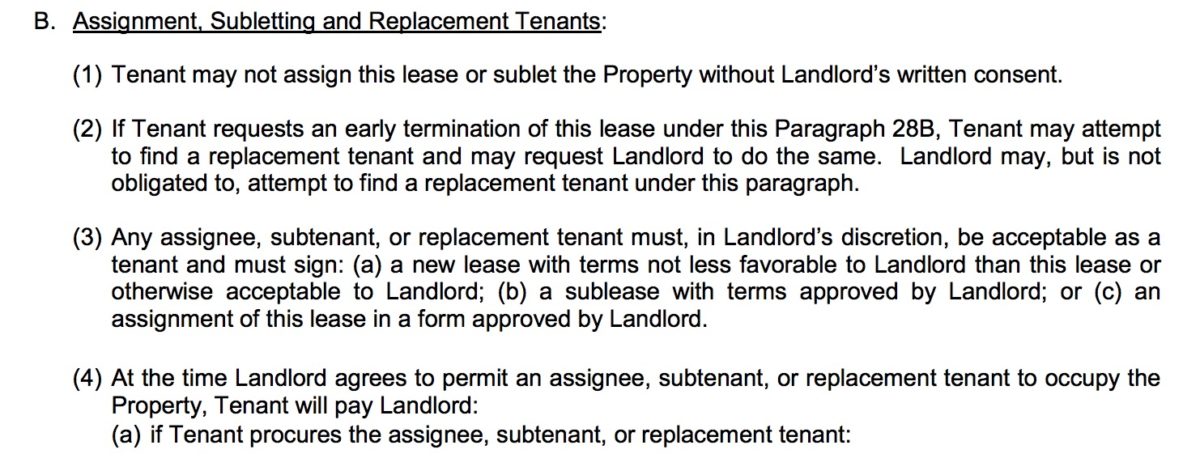

Is sub-letting allowed? Can you assign the lease to someone else if you need to leave? If so, the section will explain the requirements. What will it cost you to sub-let? Will you be released from responsibilities?

What other documents make up this lease? If it’s checked off, it should be attached. Make sure that there are no missing documents?

Make sure this section is not left blank. It’s very important to have all parties contact info.

It’s important to have renter’s insurance. The landlord’s insurance policy does not cover your personal belongings.

Will the landlord act like a property manager? Is there a property manager? If so, their information should be listed.
